-
 Bitcoin
Bitcoin $118400
0.47% -
 Ethereum
Ethereum $3836
2.20% -
 XRP
XRP $3.157
2.98% -
 Tether USDt
Tether USDt $0.9999
-0.03% -
 BNB
BNB $801.5
1.31% -
 Solana
Solana $180.9
2.07% -
 USDC
USDC $0.9999
-0.02% -
 Dogecoin
Dogecoin $0.2225
2.50% -
 TRON
TRON $0.3285
-1.02% -
 Cardano
Cardano $0.7789
2.60% -
 Hyperliquid
Hyperliquid $43.60
2.39% -
 Sui
Sui $3.892
4.41% -
 Stellar
Stellar $0.4229
3.34% -
 Chainlink
Chainlink $18.01
3.98% -
 Hedera
Hedera $0.2745
6.77% -
 Bitcoin Cash
Bitcoin Cash $582.3
3.38% -
 Avalanche
Avalanche $23.77
1.04% -
 Ethena USDe
Ethena USDe $1.001
0.01% -
 Toncoin
Toncoin $3.493
3.59% -
 Litecoin
Litecoin $110.0
2.48% -
 UNUS SED LEO
UNUS SED LEO $8.936
-0.37% -
 Shiba Inu
Shiba Inu $0.00001304
2.49% -
 Uniswap
Uniswap $9.999
1.09% -
 Polkadot
Polkadot $3.897
3.26% -
 Monero
Monero $308.6
-0.83% -
 Dai
Dai $0.9999
-0.01% -
 Bitget Token
Bitget Token $4.504
-0.04% -
 Pepe
Pepe $0.00001154
2.95% -
 Cronos
Cronos $0.1471
3.06% -
 Ethena
Ethena $0.6691
19.53%
How do you interpret the increase in volume after the KDJ three lines form a golden cross in the oversold zone?
A KDJ golden cross in the oversold zone with rising volume signals strong reversal potential, especially when confirmed by bullish candlesticks, support levels, and increased buyer participation.
Jul 30, 2025 at 10:22 am
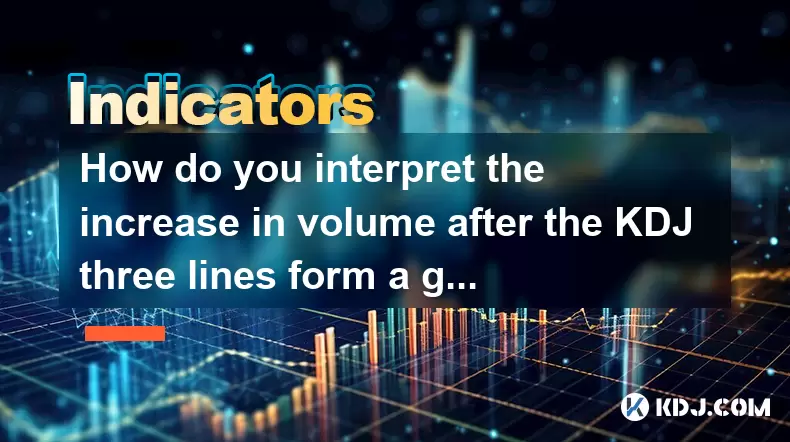
Understanding the KDJ Indicator and Its Components
The KDJ indicator is a momentum oscillator widely used in cryptocurrency technical analysis to identify overbought and oversold conditions. It consists of three lines: the %K line, the %D line, and the %J line. The %K line represents the current closing price relative to the high-low range over a specified period, typically 9 periods. The %D line is a moving average of the %K line, and the %J line is derived from a formula that amplifies the difference between %K and %D. When all three lines converge and then diverge in a specific pattern, it can signal potential trend reversals.
A golden cross in the KDJ indicator occurs when the %K line crosses above the %D line, and both are below the %J line, typically in the oversold zone (usually below 20). This configuration suggests that downward momentum is weakening and upward momentum may be building. However, the signal gains more credibility when confirmed by other indicators or price action, particularly trading volume.
What Does the Oversold Zone Signify in KDJ?
When the KDJ lines fall into the oversold zone, it indicates that the asset has been heavily sold off over the recent periods. In the context of cryptocurrency markets, which are highly volatile, oversold conditions often precede potential rebounds. However, being oversold does not guarantee an immediate reversal. The market can remain oversold for extended periods during strong downtrends.
The significance of the oversold zone is that it increases the probability of a bullish reversal, especially when combined with a structural signal like a golden cross. Traders monitor this zone closely because it often acts as a psychological threshold. When the KDJ lines form a golden cross while in this zone, it suggests that buying pressure is starting to overcome selling pressure.
Interpreting Increased Volume After a Golden Cross
An increase in trading volume following a KDJ golden cross in the oversold zone is a strong confirmation signal. Volume reflects the intensity of market participation. When volume rises during or after the cross, it indicates that more traders are entering long positions, validating the reversal signal.
Key implications of rising volume include:
- Confirmation of buyer interest: Higher volume shows that the price movement is supported by real market activity, not just algorithmic noise.
- Reduced likelihood of a false signal: Many technical patterns fail due to lack of follow-through. Increased volume reduces the risk of a whipsaw or fake breakout.
- Potential for sustained upward movement: Strong volume often precedes a continuation of the new trend, especially if it remains elevated in subsequent candles.
In cryptocurrency trading, where liquidity can vary significantly across exchanges and assets, volume analysis is critical. A golden cross on a low-volume candle may be ignored, but the same pattern on a high-volume candle demands attention.
How to Validate the Signal with Additional Tools
To enhance the reliability of the KDJ golden cross with rising volume, traders often combine it with other technical tools. These include:
- Candlestick patterns: Look for bullish formations such as hammer, bullish engulfing, or morning star near the time of the cross.
- Support levels: Confirm whether the price is near a known support zone, such as a previous low or a Fibonacci retracement level.
- Moving averages: Check if the price is approaching or bouncing from key moving averages like the 50-period or 200-period MA.
- RSI (Relative Strength Index): Ensure that RSI is also exiting the oversold zone (below 30) and showing bullish divergence.
Using multiple indicators reduces the risk of acting on a single, potentially misleading signal. For example, a KDJ golden cross with rising volume and a bullish engulfing candle at a major support level is far more convincing than the KDJ signal alone.
Step-by-Step Guide to Trading This Setup
When you observe a KDJ golden cross in the oversold zone with rising volume, consider the following steps:
- Identify the golden cross: Use a charting platform like TradingView or Binance’s built-in chart. Enable the KDJ indicator and set the default parameters (9,3,3). Wait for the %K line to cross above the %D line while all three lines are below 20.
- Check volume bars: Immediately after the cross, examine the volume histogram. Look for a noticeable spike compared to the previous 3–5 candles.
- Confirm price action: Ensure the current candle or the next one closes higher. Avoid acting on a cross that occurs on a doji or indecisive candle.
- Set entry point: Enter a long position at the close of the confirmation candle or use a limit order slightly above the cross candle’s high.
- Place stop-loss: Set a stop-loss below the recent swing low or below the low of the cross candle to manage risk.
- Determine take-profit levels: Use resistance levels, Fibonacci extensions, or a risk-reward ratio (e.g., 1:2 or 1:3) to define exit points.
This approach ensures a structured and disciplined entry, minimizing emotional decisions.
Common Pitfalls and How to Avoid Them
Even with a strong signal, traders can make mistakes. One common error is entering too early—before volume confirms the move. Another is ignoring the broader trend; a golden cross in a strong bear market may only lead to a short bounce.
Additional risks include:
- Low liquidity traps: On smaller altcoins, volume spikes can be manipulated. Always check volume across multiple exchanges if possible.
- Timeframe mismatch: A golden cross on a 15-minute chart may not align with the 4-hour trend. Trade in the direction of the higher timeframe.
- Over-reliance on KDJ: No single indicator is foolproof. Always use volume and price action as primary filters.
Avoiding these pitfalls requires patience and a multi-layered analysis approach.
Frequently Asked Questions
What timeframes are best for observing the KDJ golden cross with volume?
The 1-hour and 4-hour charts are most effective for balancing signal quality and noise reduction. Lower timeframes like 5-minute charts generate too many false signals, while daily charts may delay entries.
Can the KDJ golden cross fail even with high volume?
Yes. High volume can sometimes indicate distribution or a short squeeze rather than sustained buying. Always confirm with price closing above key levels and absence of strong resistance overhead.
How do you distinguish between a genuine volume spike and a pump-and-dump?
A genuine spike is accompanied by sustained volume over several candles and occurs near strong support. Pump-and-dump volume is often isolated, lacks follow-through, and happens without technical justification.
Is the KDJ indicator equally effective across all cryptocurrencies?
No. KDJ works better in highly liquid and less manipulated markets like Bitcoin or Ethereum. On low-cap altcoins with erratic volume, the indicator may produce unreliable signals.
Disclaimer:info@kdj.com
The information provided is not trading advice. kdj.com does not assume any responsibility for any investments made based on the information provided in this article. Cryptocurrencies are highly volatile and it is highly recommended that you invest with caution after thorough research!
If you believe that the content used on this website infringes your copyright, please contact us immediately (info@kdj.com) and we will delete it promptly.
- Ozak AI: Can This Underdog Crypto Achieve a Bull Run to $1?
- 2025-07-31 22:30:12
- Coinbase Breach: Navigating Insider Risk and Bolstering Security
- 2025-07-31 23:11:55
- Bitcoin Rebounds, WeWake Presale Gains Traction: What's the Buzz?
- 2025-07-31 22:30:12
- Bitcoin, Altcoins, and Volume Watchlists: Decoding the Crypto Landscape
- 2025-07-31 23:11:55
- Tron, Fartcoin, and BlockchainFX: What's Trending (and What's Not) in the Crypto World
- 2025-07-31 21:32:19
- Bitcoin, Corporate Investments, and Sustainability: A New Era or Fleeting Fad?
- 2025-07-31 20:50:14
Related knowledge

How can you use the MACD histogram to determine trend strength?
Jul 31,2025 at 11:10pm
Understanding the MACD Histogram and Its ComponentsThe MACD (Moving Average Convergence Divergence) histogram is a visual representation of the differ...
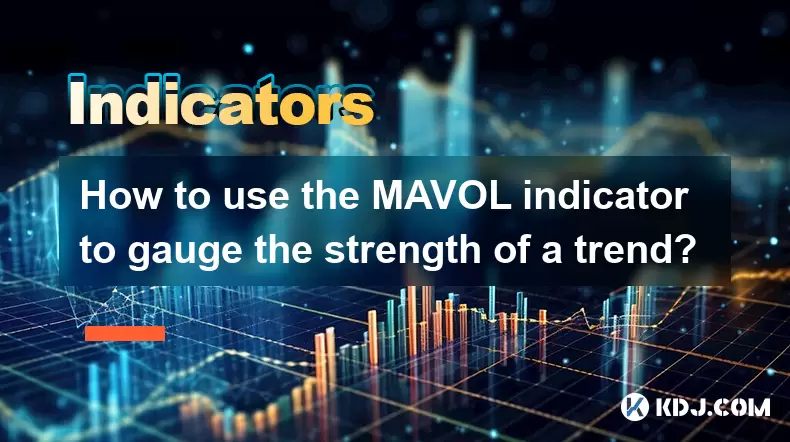
How to use the MAVOL indicator to gauge the strength of a trend?
Jul 31,2025 at 09:57pm
Understanding the MAVOL Indicator in Cryptocurrency TradingThe MAVOL indicator, short for Moving Average of Volume, is a technical analysis tool widel...
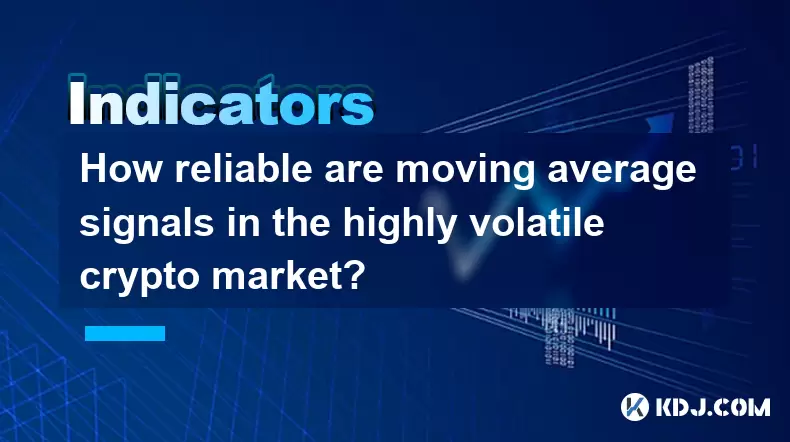
How reliable are moving average signals in the highly volatile crypto market?
Jul 31,2025 at 08:36pm
Understanding Moving Averages in Cryptocurrency TradingMoving averages (MAs) are among the most widely used technical indicators in the cryptocurrency...
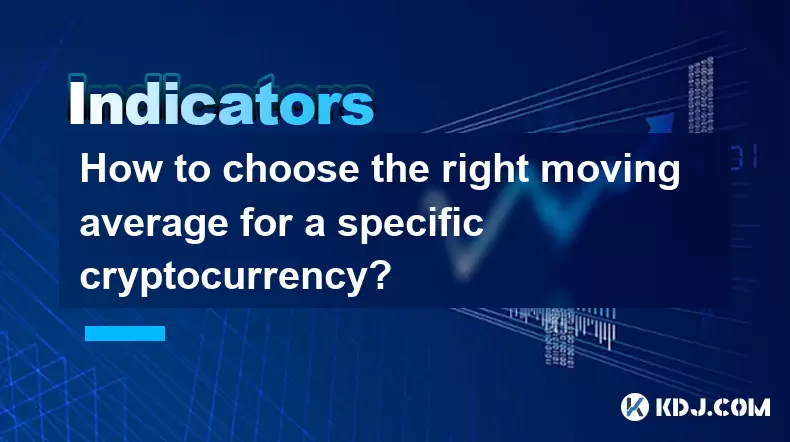
How to choose the right moving average for a specific cryptocurrency?
Jul 31,2025 at 10:29pm
Understanding the Role of Moving Averages in Cryptocurrency TradingMoving averages are foundational tools in technical analysis, widely used by crypto...
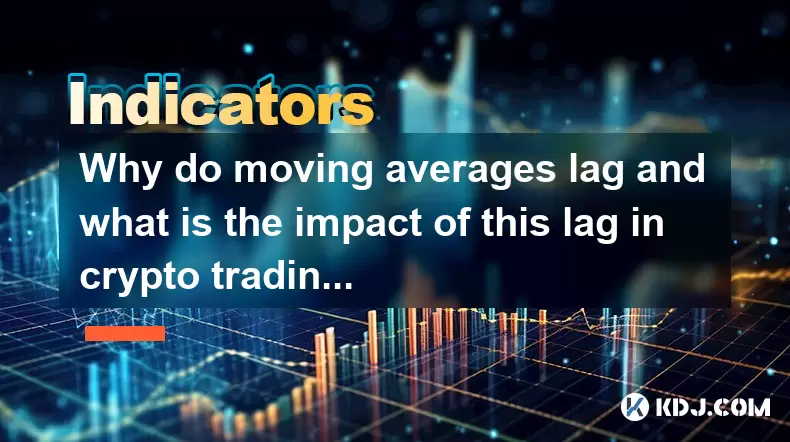
Why do moving averages lag and what is the impact of this lag in crypto trading?
Jul 31,2025 at 08:07pm
Understanding the Concept of Moving Averages in Crypto TradingMoving averages are among the most widely used technical indicators in cryptocurrency tr...
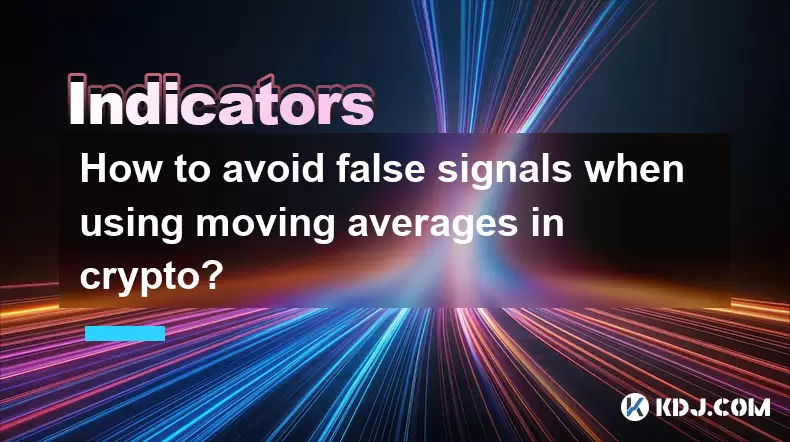
How to avoid false signals when using moving averages in crypto?
Jul 31,2025 at 11:29pm
Understanding Moving Averages in Cryptocurrency TradingMoving averages are among the most widely used technical indicators in the cryptocurrency marke...

How can you use the MACD histogram to determine trend strength?
Jul 31,2025 at 11:10pm
Understanding the MACD Histogram and Its ComponentsThe MACD (Moving Average Convergence Divergence) histogram is a visual representation of the differ...

How to use the MAVOL indicator to gauge the strength of a trend?
Jul 31,2025 at 09:57pm
Understanding the MAVOL Indicator in Cryptocurrency TradingThe MAVOL indicator, short for Moving Average of Volume, is a technical analysis tool widel...

How reliable are moving average signals in the highly volatile crypto market?
Jul 31,2025 at 08:36pm
Understanding Moving Averages in Cryptocurrency TradingMoving averages (MAs) are among the most widely used technical indicators in the cryptocurrency...

How to choose the right moving average for a specific cryptocurrency?
Jul 31,2025 at 10:29pm
Understanding the Role of Moving Averages in Cryptocurrency TradingMoving averages are foundational tools in technical analysis, widely used by crypto...

Why do moving averages lag and what is the impact of this lag in crypto trading?
Jul 31,2025 at 08:07pm
Understanding the Concept of Moving Averages in Crypto TradingMoving averages are among the most widely used technical indicators in cryptocurrency tr...

How to avoid false signals when using moving averages in crypto?
Jul 31,2025 at 11:29pm
Understanding Moving Averages in Cryptocurrency TradingMoving averages are among the most widely used technical indicators in the cryptocurrency marke...
See all articles

























































































